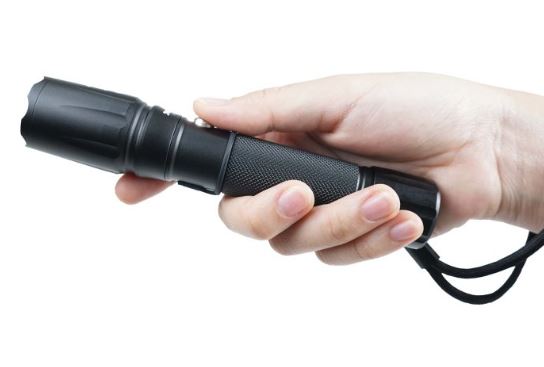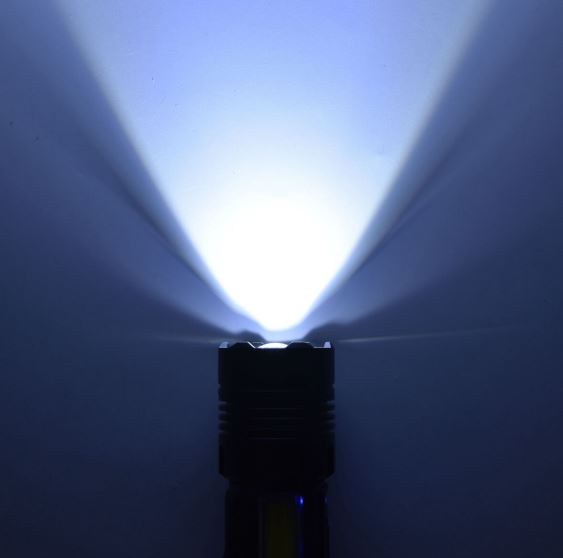When it comes to handheld lighting, LED flashlights have surfaced as a transformative technology, innovating the manner we illuminate our surroundings. These compact, yet mighty devices have become a vital tool for professionals, outdoor fans, and daily users alike. With their exceptional energy performance, resilience, and adaptability, LED flashlights have rapidly outshone their incandescent counterparts, establishing their position as the future of portable lighting.One of a good product of LED flashlight is EDC27 Nitecore amazon, it is a compact and powerful everyday carry flashlight, offering a maximum output of 3000 lumens and a range of useful features for various lighting needs.

At the heart of an LED flashlight lies the LED, a semiconductor device that transforms electricity into light. Different from traditional incandescent bulbs, which rely on a filament that warms up to generate light, LEDs produce light through a process called electroluminescence. This key difference in technology is what sets LED flashlights different from their predecessors, offering numerous advantages that have made them the chosen choice for numerous applications.
Merits of LED Flashlights
One of the most significant benefits of LED flashlights is their remarkable energy efficiency. LEDs use significantly less power than incandescent bulbs, enabling them to run for lengthy periods on a single set of batteries. This efficiency leads to longer runtime, making LED flashlights ideal for situations where reliable, long-lasting illumination is crucial, such as camping trips, power outages, or emergency situations. Moreover, the decreased power consumption of LEDs means that users can cut costs on replacement batteries, making them an economical choice in the long run.In addition to their energy efficiency, LED flashlights are known for their toughness and strength. Traditional incandescent bulbs are delicate and vulnerable to breakage, especially when under shock or vibration. Conversely, LEDs are durable devices with no mechanical elements or delicate filaments, making them highly resistant to impact and vibration. This rugged construction allows LED flashlights to withstand the demands of outdoor use, including inadvertent drops, bumps, and exposure to extreme weather conditions. Whether you're walking through rough terrain, working on a construction site, or simply navigating a dark path, an LED flashlight can provide dependable illumination without the risk of unexpected failure.
Another advantage of LED flashlights is their exceptional brightness and beam quality. Advancements in LED technology have led to the development of strong LEDs that can create powerful, focused beams of light. These strong LEDs, combined with carefully designed reflectors and lenses, allow LED flashlights to generate a bright, uniform beam that can brighten objects at an impressive distance. The ability to project a powerful, focused beam is particularly valuable in outdoor settings, where users need to identify potential hazards or navigate through unlit, unknown environments. Furthermore, many LED flashlights offer customizable beam patterns, allowing users to switch between an expansive flood beam for nearby work and a narrow spot beam for long-range illumination, providing adaptability for different lighting needs.
The small size and lightweight design of LED flashlights are also substantial advantages over their incandescent counterparts. LEDs are considerably tinier than traditional bulbs, allowing manufacturers to create flashlights that are more compact and more convenient to carry. This portability is particularly beneficial for professionals who need to transport a flashlight as part of their everyday gear, such as law enforcement officers, firefighters, and utility workers. The lightweight nature of LED flashlights also makes them less fatiguing to hold and use for prolonged periods, reducing hand fatigue and strain.
In terms of longevity, LED flashlights have a distinct edge over incandescent models. LEDs have a remarkable lifespan, often persisting tens of thousands of hours before requiring replacement. This prolonged lifespan means that users can rely on their LED flashlights for years without the need for constant bulb changes. In contrast, incandescent bulbs have a considerably less lifespan, typically enduring only a few hundred hours before burning out. The extended lifespan of LEDs not only provides convenience but also contributes to the general cost-effectiveness of LED flashlights, as users can avoid the expense and inconvenience of constantly replacing bulbs.
Flexibility and Applications
The flexibility of LED flashlights extends beyond their main function of providing illumination. Many advanced LED flashlights come fitted with supplementary features that enhance their functionality and versatility. Some models include multiple lighting modes, such as bright, mid-level, and low brightness settings, as well as strobe or SOS modes for emergency signaling. These varied lighting modes allow users to customize the flashlight's output to match their unique needs, conserving battery life when maximum brightness is not needed. Additionally, some LED flashlights incorporate rechargeable batteries, removing the need for throwaway batteries and providing a more green and cost-effective solution.
The toughness and trustworthiness of LED flashlights make them an indispensable tool in various professional fields. Law enforcement officers, for example, depend on LED flashlights for operational operations, suspect searches, and crime scene investigations. The bright, focused beam of an LED flashlight can assist officers recognize potential threats and compile evidence in low-light conditions. Similarly, firefighters and emergency responders use LED flashlights to maneuver through smoky buildings, pinpoint victims, and assess hazardous situations. The rugged construction and waterproof properties of many LED flashlights assure that they can survive the extreme conditions encountered in these challenging professions.

Outdoor fans, such as hikers, campers, and hunters, have also embraced LED flashlights as an essential part of their gear. The extended runtime and bright illumination provided by LED flashlights are priceless when investigating remote wilderness areas, setting up camp in the dark, or following game during early morning or late evening hours. The small size and featherweight design of LED flashlights make them easy to pack and carry, ensuring that outdoor adventurers always have a dependable source of light at their disposal.
In the realm of home and personal use, LED flashlights have become a necessity for emergency preparedness and everyday convenience. During power outages or natural disasters, an LED flashlight can provide critical illumination, enabling families to cautiously navigate their homes, pinpoint supplies, and signal for help if needed. The long runtime of LED flashlights guarantees that users have a trustworthy light source even during lengthy periods without electricity. Furthermore, LED flashlights are handy for a variety of household tasks, such as inspecting dark corners, reading in dim conditions, or executing minor repairs in inadequately lighted areas. For more detailed information, reviews, and specifications, be sure to visit https://medium.com/@blackbookz.one/nitecore-edc27-3-000-lumen-flat-edc-rechargeable-flashlight-high-performance-compact-pocket-light-ecf750d57b54, where you can explore all the features and benefits that make the Nitecore EDC27 an exceptional lighting tool.
Future of LED Flashlights
As technology continues to advance, the future of LED flashlights looks more promising than ever. Manufacturers are continuously extending the boundaries of LED performance, creating stronger and proficient LEDs that offer even higher brightness and prolonged runtimes. Developments in battery technology, such as the incorporation of rechargeable batteries, are moreover boosting the performance and simplicity of LED flashlights. Additionally, the inclusion of advanced features, such as adjustable settings and smartphone-enabled controls, is converting LED flashlights into extremely personalizable and intuitive devices.Overall, the Nitecore EDC 27 is an impressive everyday carry flashlight that offers exceptional brightness, a range of useful features, and a durable design, making it a dependable lighting companion for any situation.


